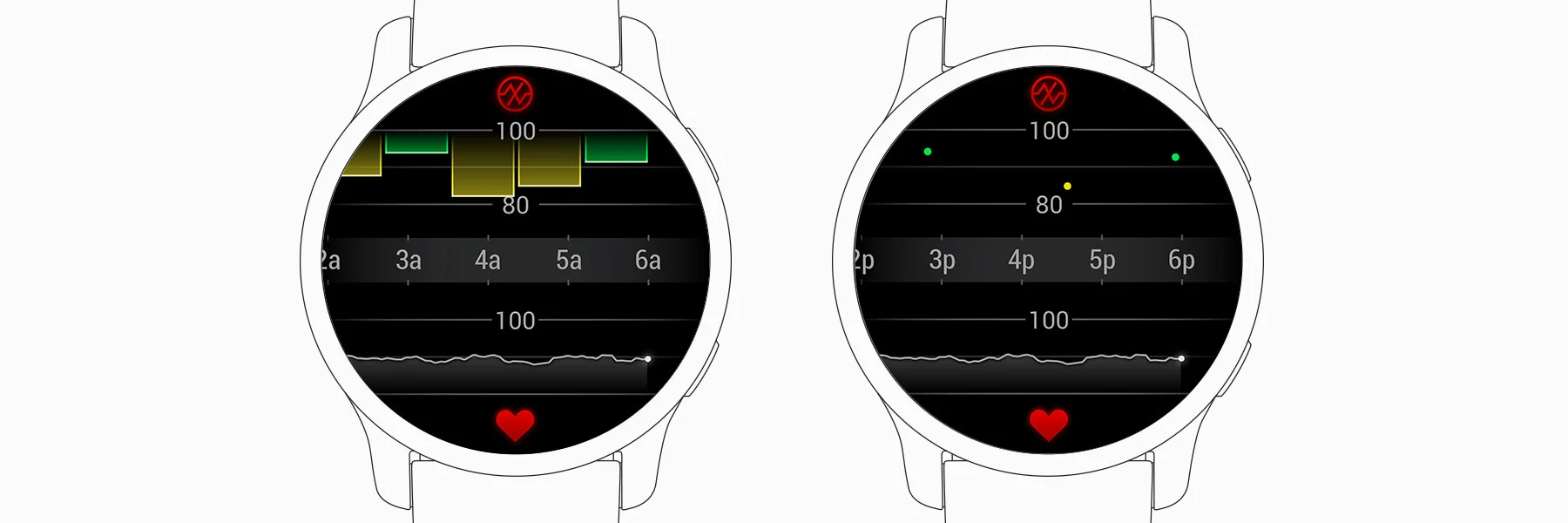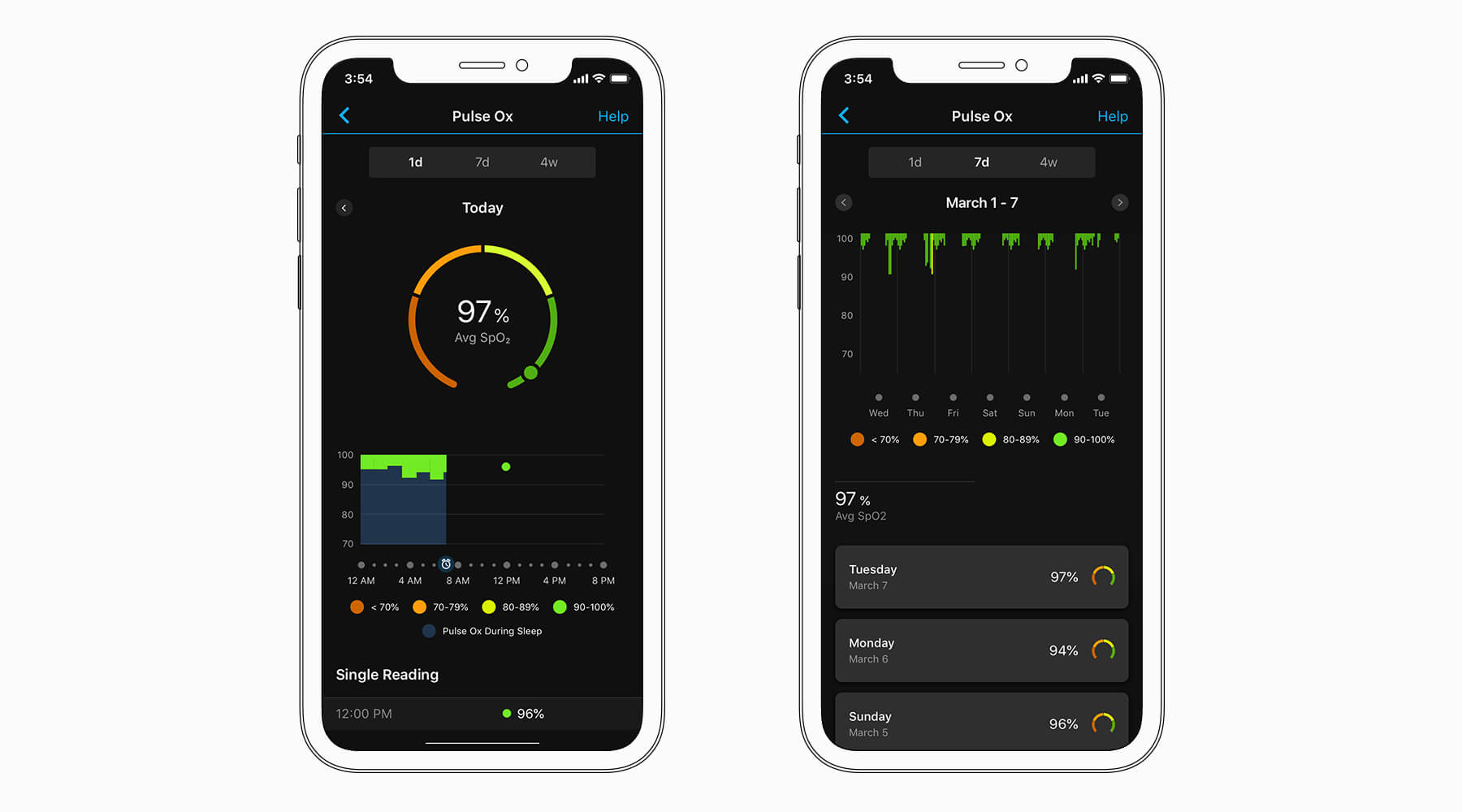
All the various cells in your body need oxygen to function properly. Your circulatory system, which includes your heart, lungs and blood, all work together to import oxygen from the environment into your cells.
Oxygen is extracted from the air that fills your lungs when you inhale. It is mixed into your blood supply and pushed throughout your body with each heartbeat. A pulse oximeter measures how much oxygen (compared to maximum capacity) is in your bloodstream as it travels around your body.
If you think about your blood as a train and oxygen as the passengers on that train, a pulse oximeter is telling you how crowded the train is compared to maximum capacity. When every seat in the train has a passenger sitting in it, then the train is operating at 100% capacity.
Compatible Garmin wearables use a combination of red and infrared lights with sensors on the back of the device, which can estimate the percentage of oxygenated blood (peripheral oxygen saturation, SpO2%) available in your blood. Generally speaking, this value should be 95% or higher in most settings, but this value can be influenced by altitude, activity and an individual’s health. Numbers below 90% may be considered low, according to the Mayo Clinic.
Your device is not intended for medical purposes, and any questions about your Pulse Ox reading should be answered by your physician or other qualified health care professional. Pulse Ox not available on Garmin devices in all countries.
